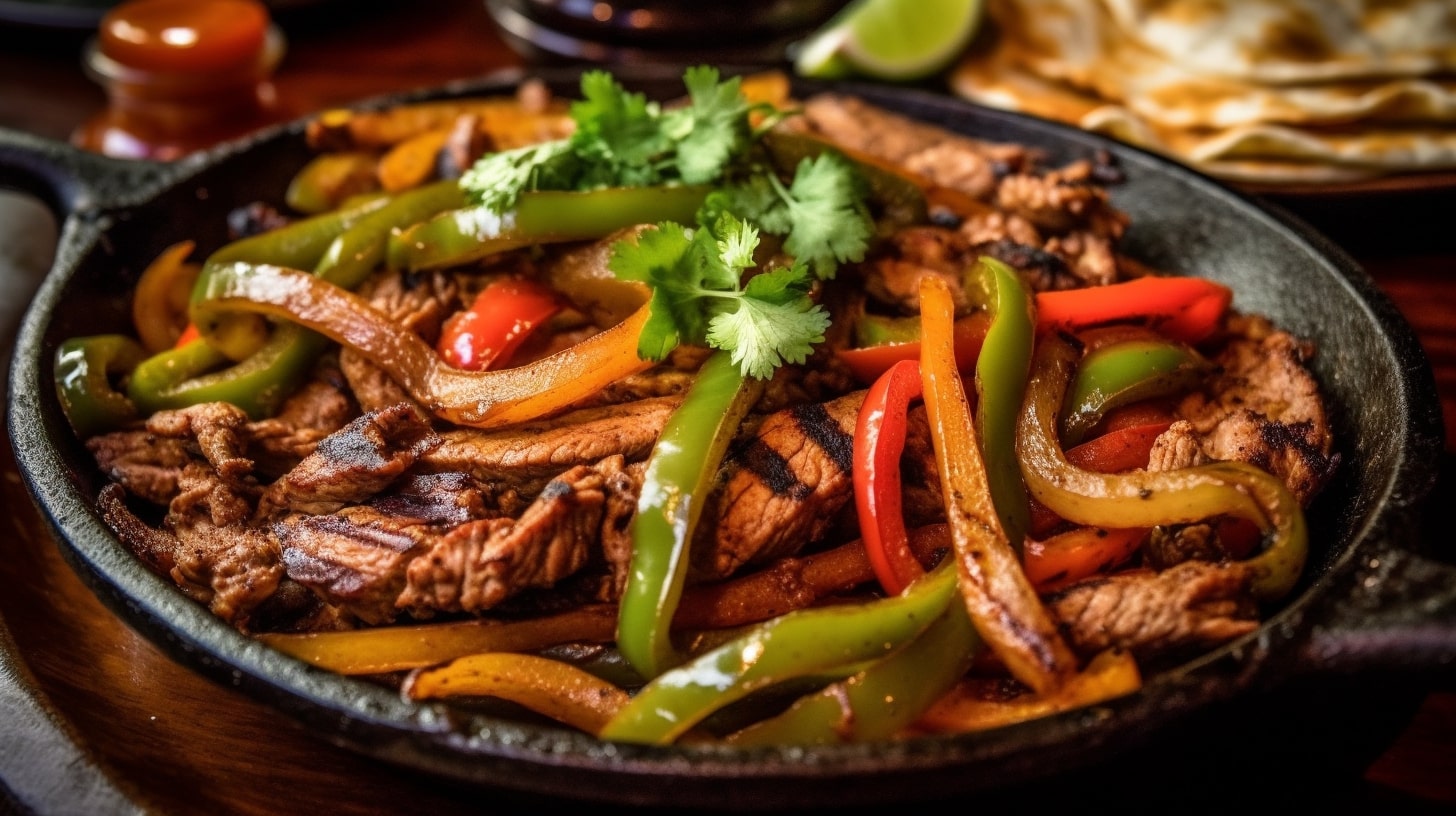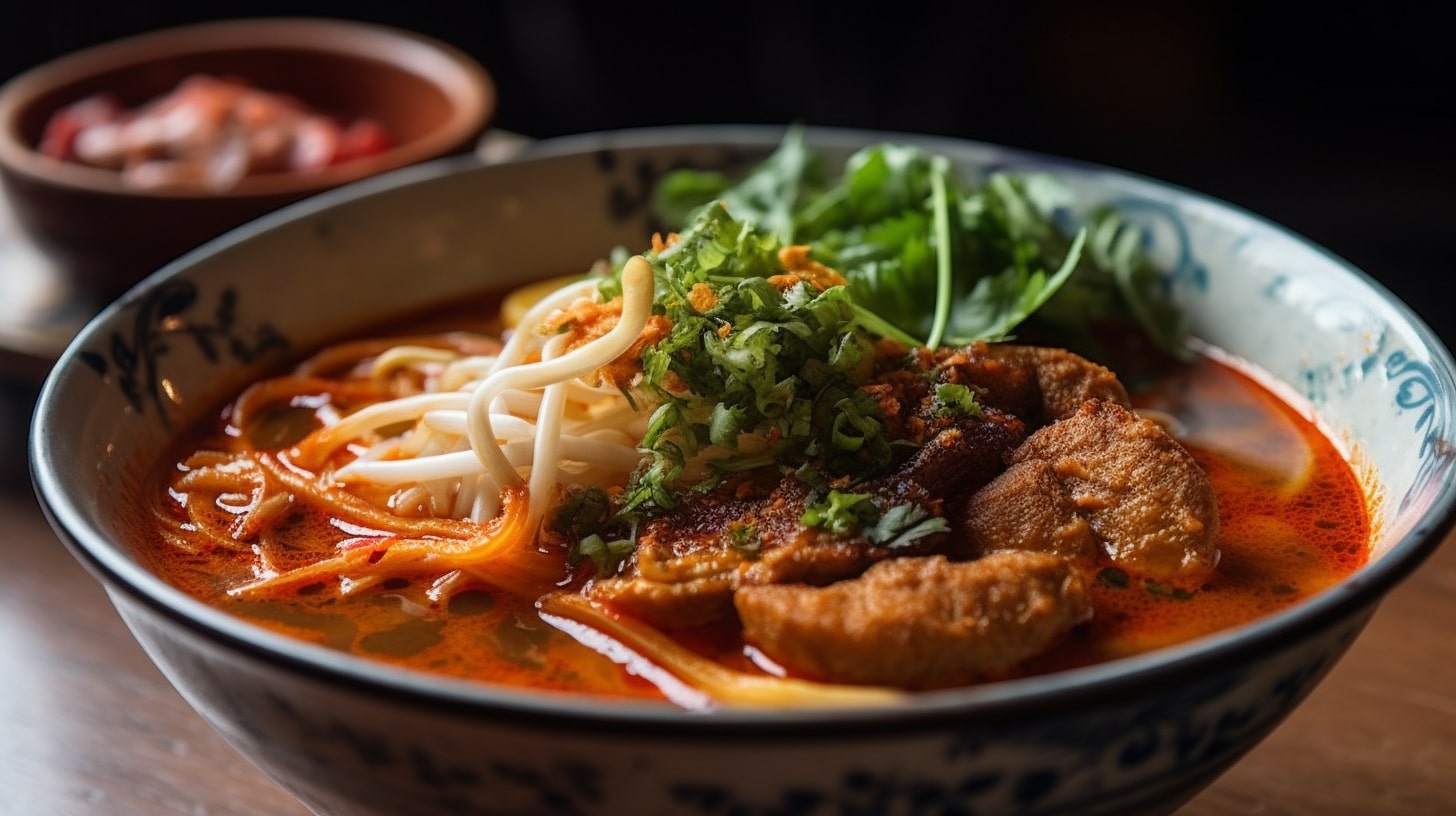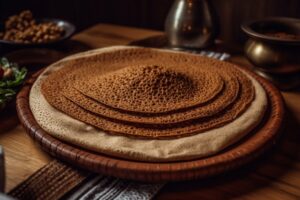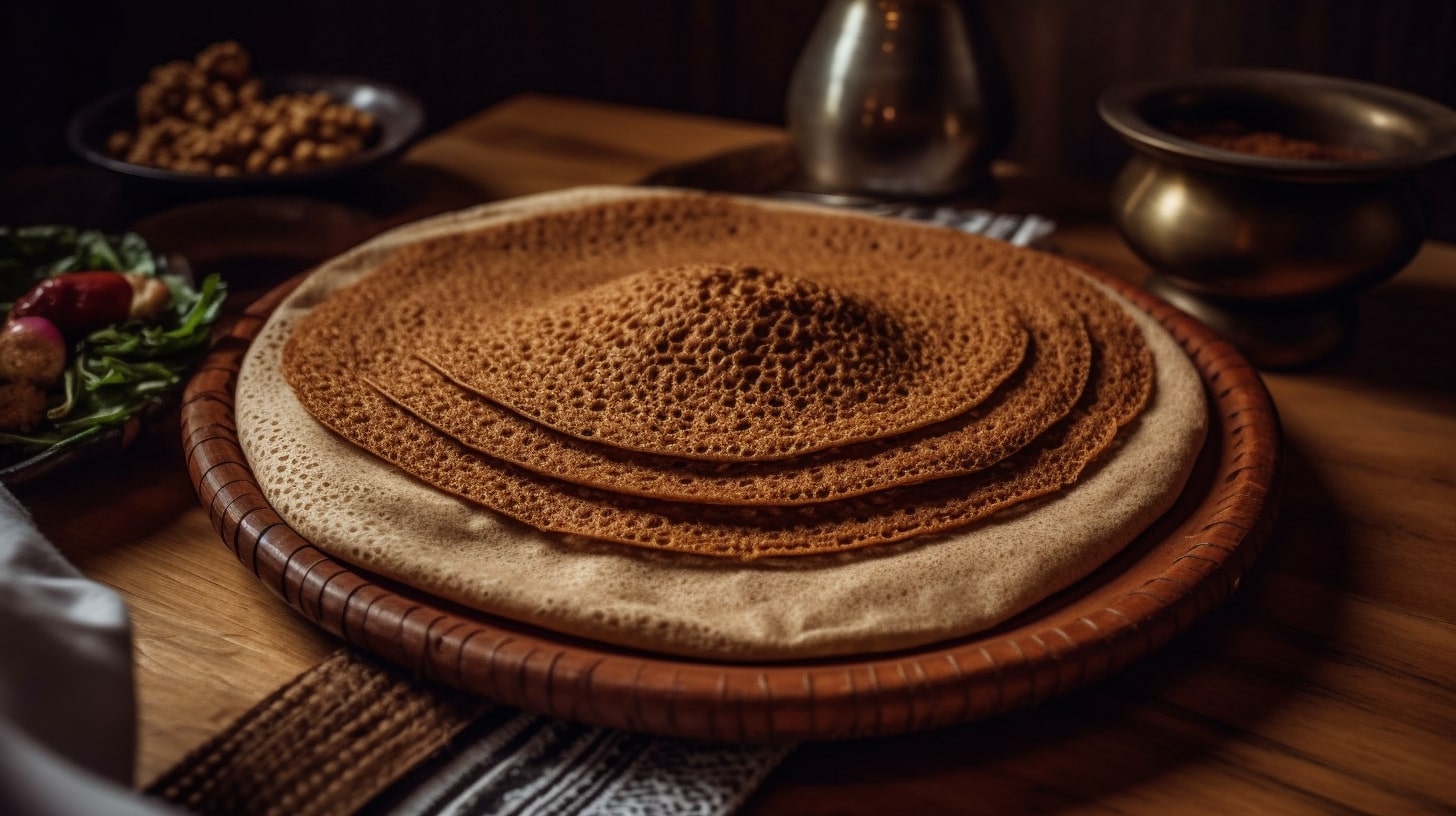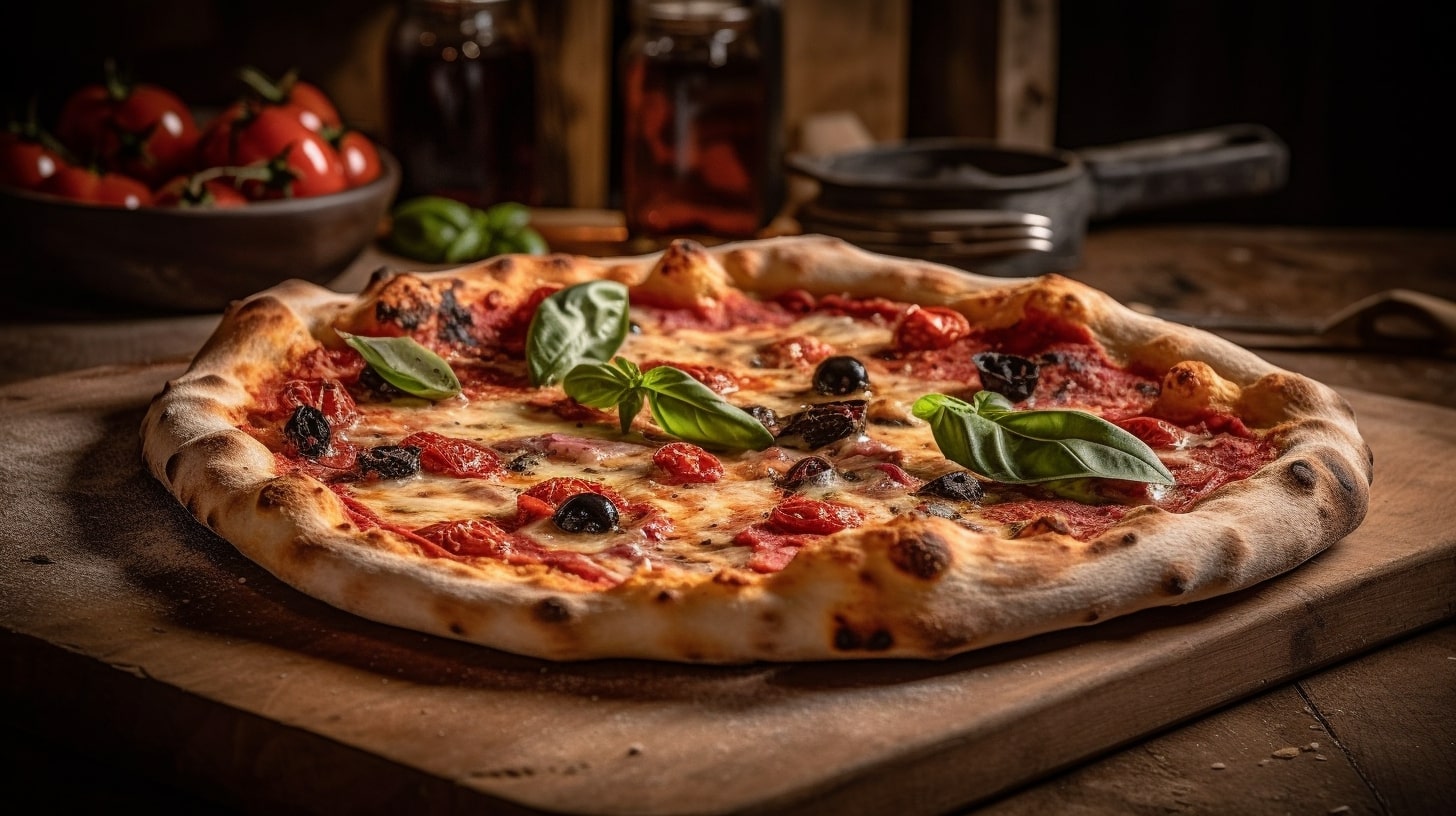A tagine is a cone-shaped cooking vessel traditionally used in Morocco; it is made of either ceramic or unglazed clay. Both materials are quite common in Morocco, but the unglazed clay adds rustic, earthy flavor and aroma to whatever is being cooked in it. The base of a Moroccan tagine is wide and shallow while the conical lid helps return condensed steam back to the food. Whether ceramic or clay, both types should be seasoned before first use. Tagines should also not come in direct contact with the heat source so if you have an electric stove or flat cooktop you will need to use a diffuser.
Layering Flavors in Moroccan Tagine Recipes
Most tagine recipes (which are referred to as tagines) layer aromatics, meat, and vegetables, along with spices, oil, and water. As the mixture cooks, a stew-like consistency develops, making a rich, flavorful sauce that is often scooped up with Moroccan bread. This step-by-step instructs how to make a Berber tagine, which includes lamb (or beef) and a variety of vegetables and spices.

Easy Steps to Cooking with a Moroccan Tagine
Once seasoned, tagines are quite easy to use. The first step of making a tagine recipe is to place a layer of sliced onions across the base of the tagine, creating a bed for the remaining ingredients. The bed of onions will prevent the meat from sticking to the bottom and burning. Other recipes might call for chopped onions to be scattered in the tagine, or perhaps celery or carrots will be crisscrossed to make a bed for fragile ingredients, as is the case in a fish tagine. Small bamboo sticks can also be used.
The Importance of Garlic and Oil
Next comes the garlic. You can use a garlic press, but you can also just as easily chop the garlic or, if you like, leave the cloves whole. By adding the garlic with ingredients at the bottom, you are assured that it will fully cook and meld with the sauce. Ample oil is the foundation of a rich sauce in a tagine, so don’t be afraid to use the full amount called for in a recipe. Most tagine recipes specify 1/4 to 1/3 cup oil. If you do reduce the oil, know that you will end up with less sauce or a watery sauce [1].
Moroccan Chicken Tagine: A Delicious Dish
Moroccan Chicken tagine is a versatile and flavorful dish that’s perfect for any occasion. This traditional Moroccan recipe combines chicken thighs with a blend of spices, garlic, onions, olives, and preserved lemons. The unique tall, cone-shaped lid of the tagine pot helps circulate steam during cooking, creating a moist and tender result. The dish takes its name from the cookware it is prepared in, just like the Spanish paella. It captures the authentic flavors of North African cuisine, offering a delightful taste from the region [2].
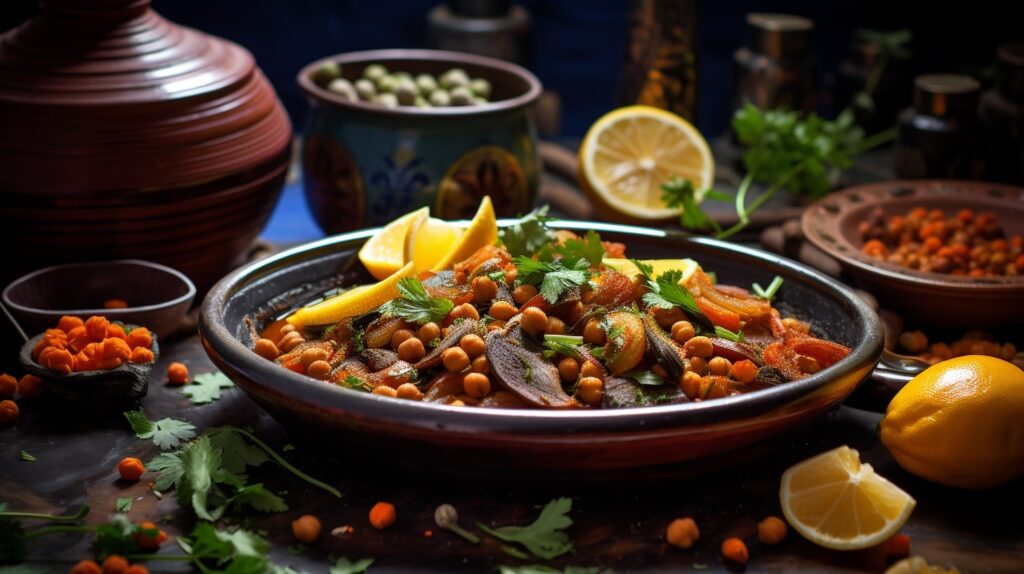
Mastering the Art of Tagine Cooking
Cooking with a tagine is a magical experience that infuses sweet and savory flavors into your dishes. The conical lid allows steam to circulate, creating condensation that drips back onto the ingredients, keeping them moist and flavorful. Tagines come in various materials, from earthenware to metal or flameproof glazed ceramic. Mastering the tagine requires some know-how: bring it to room temperature before cooking, lightly cook the onions and spices, and let the tagine work its slow-cooking magic. Serve your tagine creation on a platter, and enjoy the rich and aromatic flavors [3].
Exploring Moroccan Tagine Culinary Delights
A Moroccan tagine is more than just a cooking vessel; it’s a gateway to a world of culinary delights. Traditionally used for slow-cooked stews, this cone-shaped ceramic pot brings out the best in meat, poultry, and fish dishes. From rich, slow-cooked stews to delectable one-pot meals, the tagine creates a symphony of flavors that’s perfect for sharing at gatherings. Whether you’re preparing a chicken tagine or experimenting with other ingredients, the Moroccan tagine opens the door to a realm of taste and tradition [4].
Savory Delights: Moroccan Chicken Tagine
Indulge in the enticing flavors of Moroccan cuisine with a delectable Chicken Tagine. This traditional dish features chicken pieces braised with a medley of spices, garlic, onions, olives, and preserved lemons. The resulting savory blend is both company-worthy and easy to prepare. While traditionally cooked in a clay tagine, this recipe can be adapted to a cast-iron braiser or a Dutch oven. Seasoned with a unique combination of spices and herbs, this Chicken Tagine promises a taste of Morocco that’s both authentic and irresistible [5].

In conclusion, cooking with a Moroccan tagine offers a captivating journey into the heart of Moroccan cuisine. From the unique design of the tagine pot to the layering of flavors and spices, each step contributes to a culinary experience that is rich, aromatic, and full of cultural heritage. Whether you’re preparing a Berber tagine, savoring a Moroccan Chicken tagine, or exploring other variations, the tagine pot promises a delightful and flavorful adventure in the world of cooking. So, gather your ingredients, embrace the traditions, and embark on a tagine culinary voyage that will leave your taste buds longing for more.
